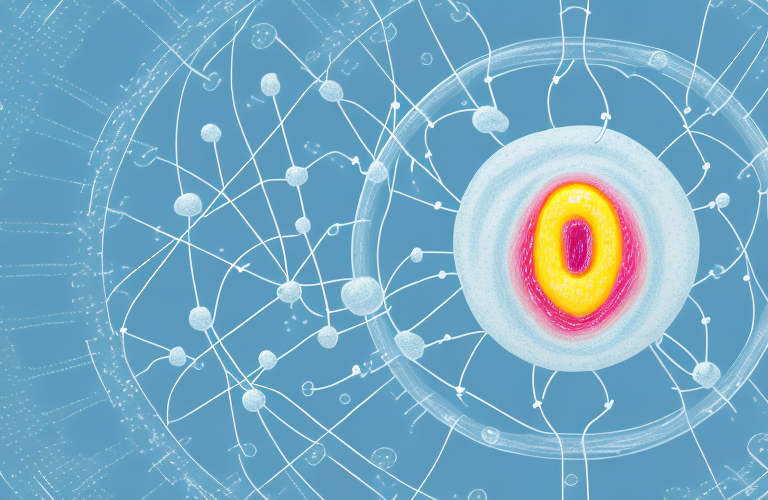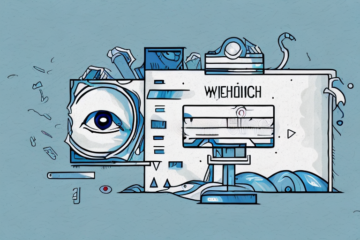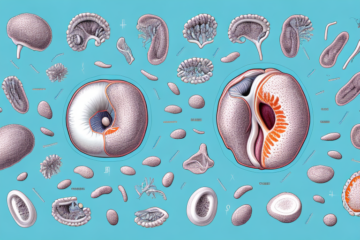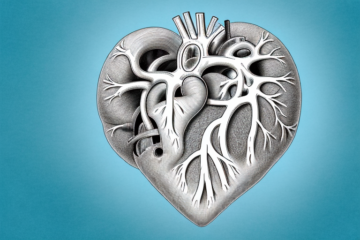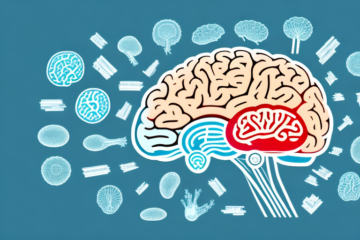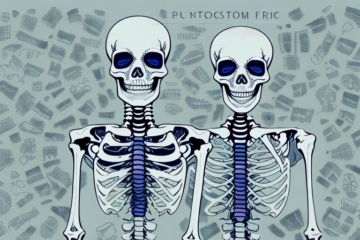Ketamine is a popular recreational drug that produces unique dissociative effects. However, prolonged use of ketamine has been linked to a range of physical and psychological problems, among which bladder dysfunction is one of the most significant. In this article, we will delve deep into the topic of Ketamine-Associated Bladder Dysfunction (KABD) and provide comprehensive information on its symptoms, causes, and treatment.
What is Ketamine and How Does it Affect the Bladder?
Ketamine is a dissociative anesthetic that has been used for decades in clinical settings to induce and maintain anesthesia. It produces a range of effects, including pain relief, sedation, and dissociation from a patient’s surroundings. Ketamine can also cause bladder dysfunction when used excessively, leading to a range of urinary and toileting symptoms.
Recent studies have shown that chronic ketamine use can lead to a condition called ketamine-induced cystitis, which is characterized by inflammation and ulceration of the bladder lining. This can cause symptoms such as frequent urination, pain during urination, and blood in the urine. In severe cases, ketamine-induced cystitis can lead to bladder shrinkage and even bladder removal surgery. It is important for healthcare providers to monitor patients who use ketamine regularly and to educate them on the potential risks and side effects of the drug.
Understanding the Symptoms of Ketamine-Associated Bladder Dysfunction
Early signs of KABD can include uncomfortable, frequent urination, and the sudden urge to urinate. However, as the condition progresses, it can lead to urinary tract infections, incontinence, and difficulty emptying the bladder completely. Severe cases may also result in blood in the urine and bladder pain, which can have a significant impact on a patient’s daily life.
It is important to note that KABD is a relatively new condition, and research is still ongoing to fully understand its causes and potential treatments. However, it is believed that long-term, high-dose use of ketamine can damage the lining of the bladder, leading to inflammation and scarring. Therefore, it is recommended that individuals who use ketamine recreationally or for medical purposes should be monitored closely for any signs of KABD and should discuss any concerns with their healthcare provider.
The Causes of Ketamine-Associated Bladder Dysfunction
Ketamine causes bladder dysfunction by affecting the lining of the bladder. It produces a range of toxic metabolites, which can damage the bladder lining and reduce its elasticity. As a result, the bladder can’t expand fully, leading to a range of urinary symptoms. Long-term use of ketamine can result in significant damage to the bladder lining, making it more challenging to treat the condition.
Aside from damaging the bladder lining, ketamine can also cause inflammation in the bladder. This inflammation can lead to the formation of ulcers and bleeding in the bladder, which can further exacerbate urinary symptoms. Additionally, ketamine use can also cause muscle spasms in the bladder, which can lead to pain and discomfort during urination.
It’s important to note that not everyone who uses ketamine will develop bladder dysfunction. However, the risk of developing this condition increases with the frequency and duration of ketamine use. It’s also more common in individuals who use higher doses of ketamine or use it in combination with other substances. If you’re experiencing urinary symptoms and have a history of ketamine use, it’s essential to speak with a healthcare provider to determine the underlying cause and receive appropriate treatment.
Prevalence of Ketamine Use and Bladder Dysfunction
Ketamine’s popularity as a recreational drug has risen in recent years. As a result, more people are experiencing the effects of KABD. According to some estimates, up to 60% of regular ketamine users develop bladder dysfunction symptoms. However, many people who use ketamine may not be aware of the risks associated with its use and can end up worsening their condition by continuing to use the drug.
It is important to note that KABD can have a significant impact on a person’s quality of life. Symptoms can include frequent urination, pain during urination, and incontinence. In severe cases, surgery may be required to repair damage to the bladder.
There is currently no known cure for KABD, but there are treatments available to manage symptoms. These can include medication, bladder training exercises, and lifestyle changes such as reducing fluid intake. It is important for individuals who use ketamine to be aware of the potential risks and to seek medical help if they experience any symptoms of KABD.
Risk Factors for Developing Ketamine-Associated Bladder Dysfunction
Some people may be at higher risk of developing KABD than others. The risk factors for developing KABD include prolonged ketamine use, high doses of ketamine, and frequency of ketamine use. Individuals with pre-existing bladder conditions, such as interstitial cystitis, may also be at higher risk of developing KABD.
Another risk factor for developing KABD is the method of ketamine administration. Intravenous (IV) use of ketamine has been associated with a higher risk of developing KABD compared to other methods of administration, such as intranasal or oral use. Additionally, individuals who use ketamine recreationally or in a non-medical setting may be at higher risk of developing KABD due to the lack of medical supervision and monitoring of their ketamine use.
It is important to note that not everyone who uses ketamine will develop KABD, and the severity of KABD can vary among individuals. However, if you are using ketamine for medical or recreational purposes, it is important to be aware of the potential risk factors and to discuss any concerns with your healthcare provider.
Diagnosis of Ketamine-Associated Bladder Dysfunction: Methods and Procedures
Diagnosing KABD can be challenging, as many of its symptoms may overlap with other bladder conditions. However, a urologist can use a variety of methods to diagnose KABD. These can include a physical exam, urine tests, bladder scans, and cystoscopy. A urologist may also ask a patient questions about their ketamine use to determine if that is the underlying cause of their bladder symptoms.
In addition to these diagnostic methods, there are also emerging technologies that may aid in the diagnosis of KABD. One such technology is magnetic resonance imaging (MRI), which can provide detailed images of the bladder and surrounding tissues. Another technology is urodynamic testing, which measures the function of the bladder and urethra during urination.
It is important to note that early diagnosis of KABD is crucial for successful treatment. If left untreated, KABD can lead to irreversible bladder damage and even the need for bladder removal surgery. Therefore, individuals who use ketamine recreationally or for medical purposes should be aware of the potential risks and seek medical attention if they experience any bladder-related symptoms.
Treatment Options for Ketamine-Associated Bladder Dysfunction
Unfortunately, there is currently no cure for KABD. However, there are many treatment options available that can alleviate its symptoms. These can include medications such as anticholinergics, bladder relaxants, and pain relievers. Surgery may also be an option in severe cases. A urologist may also recommend lifestyle changes, such as modifying fluid intake and toileting habits, to help manage the symptoms of KABD.
In addition to these treatment options, some patients have found relief through alternative therapies such as acupuncture, pelvic floor physical therapy, and herbal supplements. These therapies may help to improve bladder function and reduce symptoms of KABD. However, it is important to discuss these options with a healthcare provider before trying them.
It is also important for individuals who use ketamine recreationally to be aware of the potential risks and to use the drug in moderation. Avoiding long-term, high-dose use of ketamine can help to reduce the risk of developing KABD. Additionally, seeking help for substance abuse and addiction can also be beneficial in preventing the development of KABD and other health complications associated with ketamine use.
Lifestyle Changes to Manage Ketamine-Associated Bladder Dysfunction Symptoms
Individuals with KABD can manage their symptoms by making several lifestyle changes. These can include modifying fluid intake and increasing fiber intake to avoid constipation, which can worsen bladder symptoms. It is also essential to perform Kegel exercises to strengthen the pelvic floor muscles and increase bladder control. A urologist can provide further advice on dietary and exercise changes to manage KABD symptoms.
In addition to lifestyle changes, medication may also be prescribed to manage KABD symptoms. Some medications can help reduce bladder spasms and improve bladder function. However, it is important to discuss the potential benefits and risks of medication with a healthcare provider.
It is also important for individuals with KABD to regularly monitor their bladder function and seek medical attention if symptoms worsen or new symptoms develop. This can include increased urinary frequency, urgency, or pain during urination. Early intervention can help prevent further damage to the bladder and improve overall quality of life.
Prevention Strategies for Ketamine-Associated Bladder Dysfunction
The best way to prevent KABD is to avoid or limit ketamine use. Individuals who have already experienced bladder symptoms from ketamine use should discontinue its use immediately to prevent further damage to the bladder. Alternative recreational drugs that do not produce toxicity in the bladder and other organs should be used instead.
Another prevention strategy for KABD is to stay hydrated. Drinking plenty of water can help flush out any toxins that may be present in the bladder. Additionally, avoiding caffeine and alcohol can also help prevent bladder irritation and inflammation.
It is also important to seek medical attention if you experience any symptoms of KABD. Early detection and treatment can help prevent further damage to the bladder. Treatment options may include medication, bladder training, or surgery in severe cases.
How to Cope with the Emotional Impact of Ketamine-Associated Bladder Dysfunction
KABD can have a significant emotional impact on individuals who are dealing with its symptoms. It can cause feelings of embarrassment, anxiety, and isolation. Support from friends, family, and healthcare professionals is essential to help individuals cope with the emotional impact of KABD. Therapy and support groups can also be helpful in providing a safe space for individuals to express their concerns and receive guidance on managing the psychological impact of KABD.
It is important for individuals with KABD to prioritize self-care and engage in activities that promote mental and emotional well-being. This can include practicing relaxation techniques such as meditation or yoga, engaging in hobbies or activities that bring joy, and seeking out social support from others who may be experiencing similar challenges. It is also important to communicate openly with healthcare providers about any emotional or psychological symptoms related to KABD, as they may be able to provide additional resources or referrals to mental health professionals.
Research Advances in the Treatment and Management of Ketamine-Associated Bladder Dysfunction
Researchers are currently investigating various approaches to treating KABD more effectively. These include developing new medications, such as nerve growth factor inhibitors, and improving surgical techniques. However, preventing ketamine use is still the best approach to eliminate KABD altogether.
Recent studies have also shown that behavioral interventions, such as cognitive-behavioral therapy and motivational interviewing, can be effective in reducing ketamine use and preventing KABD. These interventions focus on addressing the underlying psychological and social factors that contribute to ketamine use, and can help individuals develop healthier coping mechanisms and alternative ways of managing stress and anxiety.
Case Studies: Real-life Experiences with Ketamine-Associated Bladder Dysfunction
Case studies offer a glimpse into what it’s like living with KABD. Many individuals have shared their experiences, highlighting the challenges and difficulties of living with a chronic bladder condition. By sharing their stories, they hope to raise awareness of the issue and reduce the stigma surrounding bladder conditions.
One common theme among these case studies is the impact that KABD has on daily life. Many individuals report frequent urination, urgency, and incontinence, which can make it difficult to leave the house or participate in social activities. Some have even had to quit their jobs or drop out of school due to the severity of their symptoms. Despite these challenges, many individuals remain hopeful and are actively seeking new treatments and therapies to manage their condition.
Resources for Support and Information on Ketamine-Associated Bladder Dysfunction
There are many resources available to individuals who have been diagnosed with KABD or suspect they may be experiencing its symptoms. These include support groups, online forums, and healthcare providers who are familiar with the condition. By accessing these resources, individuals can gain the information they need to manage their symptoms and improve their quality of life.
In conclusion, KABD is a serious condition that can have a significant impact on an individual’s bladder health and overall wellbeing. However, by understanding its causes, symptoms, and treatment options, individuals can take steps to manage their condition and prevent it from progressing. Avoiding or limiting ketamine use is the best preventative measure individuals can take, and seeking support from healthcare professionals and peer groups can provide vital emotional and practical support.
It is important to note that KABD can also have a significant impact on an individual’s mental health. The chronic pain and discomfort associated with the condition can lead to anxiety, depression, and other mental health issues. Therefore, it is crucial for individuals with KABD to seek support not only for their physical symptoms but also for their mental health. This may include therapy, counseling, or support groups specifically tailored to individuals with chronic pain conditions.

